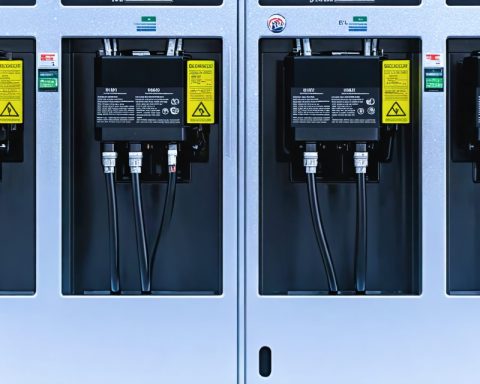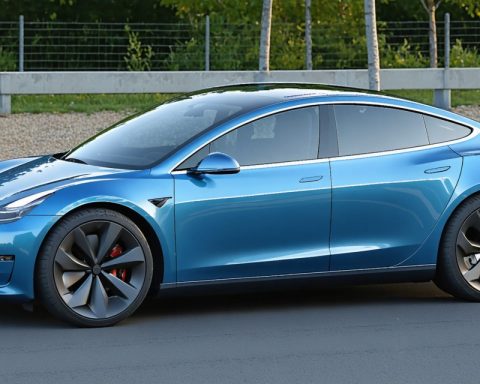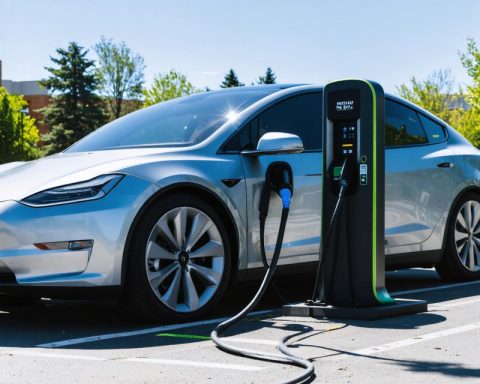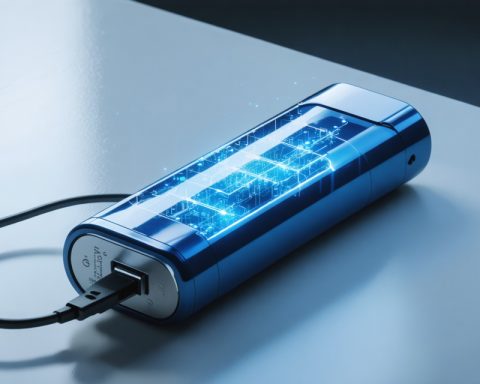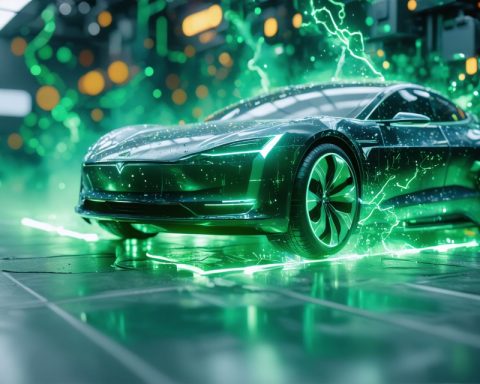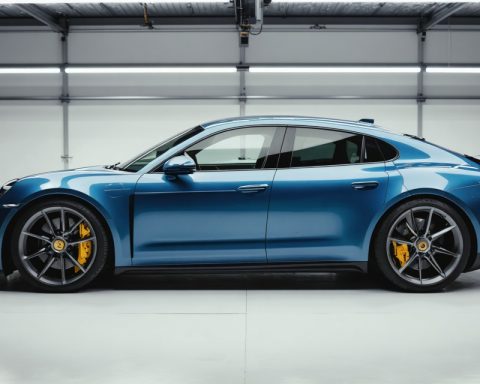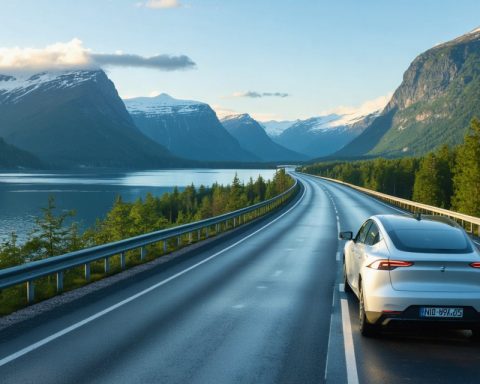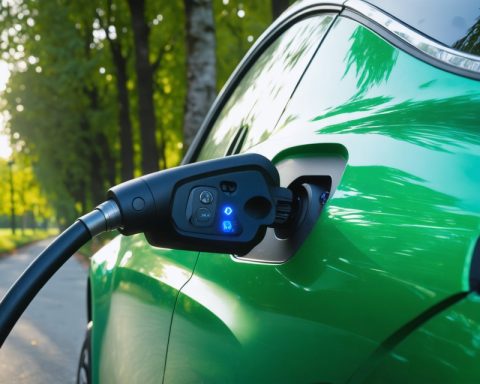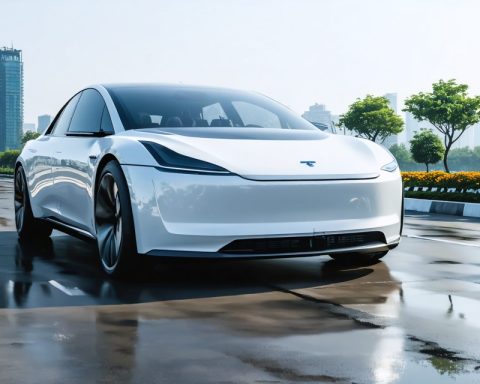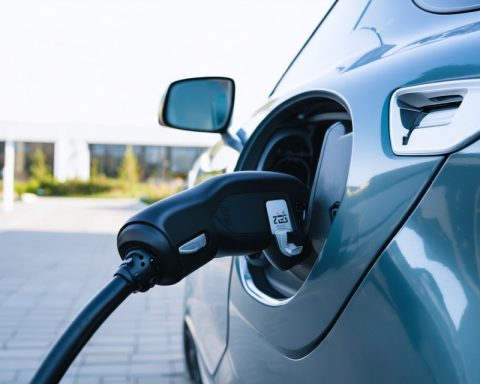- Meridian Energy and Relectrify have developed a charging station in New Zealand’s South Island, tackling the issue of “charging deserts.”
- The project features two 50 kW DC chargers supported by a battery energy storage system (BESS) made from recycled Nissan Leaf batteries.
- The BESS stores energy during low-demand nighttime hours and supplies it during the day, aiding EVs in remote areas.
- The installation overcame commissioning delays and network limitations by innovating BESS operations, using grid energy only when excess is available.
- New Zealand’s EECA low-emission transport fund supports the Springs Junction initiative, promoting sustainable transport development.
- As the system matures, it encourages responsible energy use while Meridian Energy continues to optimize its functionality.
- The initiative showcases New Zealand’s innovative approach to sustainable energy and EV infrastructure in challenging terrains.
Nestled amid the picturesque, rugged landscapes of New Zealand’s South Island, a groundbreaking innovation has emerged at Springs Junction, a remote location 208 kilometers north of Christchurch. Here, Meridian Energy, in tandem with Melbourne-based startup Relectrify, has launched a charging oasis that promises to light up the future of electric vehicles (EVs) in even the most challenging terrains.
This ambitious project tackles the pressing problem of “charging deserts” by utilizing two 50 kW DC chargers, ingeniously supported by an energy storage system (BESS) comprised of recycled Nissan Leaf batteries. These three 130 kWh BESS units draw power at low-demand nighttime hours and serve it up through the day, ensuring that energy-thirsty EVs can keep exploring New Zealand’s wild frontiers.
The journey to operational status was far from smooth. The Springs Junction installation faced logistical nightmares of commissioning delays, compounded by the site’s remoteness and network limitations. However, the team’s resolve never wavered. Innovating relentlessly, they reengineered the code for the BESS, fine-tuning it to only tap into the grid’s offerings when surplus energy was available. This not only preserved the local energy ecosystem but turned necessity into innovation hallmarked by Kiwi ingenuity.
Still in its infancy, the Springs Junction venture represents more than just an advancement in sustainable transport. It’s a beacon of resilience and forward-thinking, backed by New Zealand’s Energy Efficiency and Conservation Authority’s (EECA) low-emission transport fund. Drivers visiting this unlikely hub are gently reminded of the site’s infancy, urged to sip on the energy made available, taking only what they need as the system evolves to meet growing demands.
As these chargers spring to life in their scenic home, Meridian Energy stands ready to tweak and optimize, ensuring that more EV drivers can venture deeper into the wilderness, confident that they won’t be left stranded. Through this blend of recycled technology and pioneering spirit, New Zealand is not just meeting its green energy needs—it’s paving the road for the future with a distinctive mark of sustainable ingenuity.
How New Zealand Turned EV Challenges Into Electrifying Opportunities
Introduction
The picturesque landscapes of New Zealand’s South Island set the stage for an electrifying innovation at Springs Junction, marking a significant milestone in the journey toward sustainable transport. The collaboration between Meridian Energy and Melbourne-based startup Relectrify has resulted in a groundbreaking solution to tackle the challenge of “charging deserts” in remote and rugged terrains. This charging oasis, powered by a blend of recycled Nissan Leaf batteries and local ingenuity, is paving the way for the future of electric vehicles (EVs) in New Zealand.
Insights Into the Charging Oasis
1. Sustainable Design and Innovation:
– The key feature of this setup is the Battery Energy Storage System (BESS), which leverages three 130 kWh units derived from recycled Nissan Leaf batteries. By drawing power during low-demand nighttime hours, the system ensures EV drivers have access to energy during the day.
– Such a system not only supports the local environment by minimizing grid dependency but also exemplifies how innovation can occur out of necessity. The reengineering of the BESS code to utilize surplus energy showcases Kiwi ingenuity at its finest.
2. Overcoming Logistical Challenges:
– Establishing this charging site was riddled with logistical challenges, from commissioning delays to network limitations. The team’s refusal to give up led to a bespoke solution that overcame these hurdles while preserving local energy ecosystems.
3. Support and Partnerships:
– The project is part of a larger effort backed by New Zealand’s Energy Efficiency and Conservation Authority’s (EECA) low-emission transport fund. This backing highlights the project’s role not just as an individual milestone, but as part of a national strategy towards sustainable energy.
Real-World Use Cases & Market Trends
– High Utility in Remote Areas:
– As EV adoption increases, the removal of charging deserts becomes essential. This project acts as a benchmark for similar regions across the globe looking to enhance their infrastructure.
– Market Forecasts:
– According to IEA, global EV sales are expected to grow exponentially, necessitating robust support infrastructure, especially in remote and underserved areas.
Pros & Cons Overview
Pros:
– Utilizes recycled materials, promoting sustainability.
– Decreases dependence on traditional grid systems.
– Supports eco-tourism by enabling EV trips into remote areas.
Cons:
– Startup complexity due to remote locations.
– Dependence on grid stability for surplus energy, which could fluctuate.
Actionable Recommendations
1. For EV Drivers:
– Plan ahead and be aware of charging station locations in remote travels. Ensure your vehicle’s charging needs align with available facilities.
2. For Emerging EV Infrastructure Developments:
– Consider using recycled batteries to build similar systems, reducing costs and promoting sustainable practices.
3. For Policymakers:
– Support projects like these with incentives and funding, ensuring infrastructure keeps pace with EV market growth.
Conclusion
With projects like the Springs Junction oasis, New Zealand offers a blueprint for blending sustainability with innovation. As Meridian Energy and Relectrify continue to optimize this site, similar initiatives worldwide can benefit from their lessons and ambitions, driving forward into an electrified future.
By tackling energy challenges with a dose of creativity and dedication, New Zealand is not just addressing its green energy needs but is establishing itself as a leader in the realm of renewable infrastructure.


